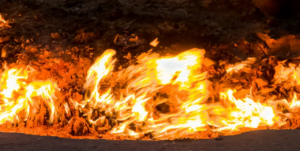Last month, a barn near rural Jackson, Michigan, caught fire in a suspected spontaneous combustion. The culprit is wet hay, which is counterintuitive if you don’t know much about the underlying science; turns out, there are many ways for materials like hay to spontaneously combust. That set our curiosity ablaze: what is combustion, anyway? How is it different from ignition, which can also be spontaneous? And what about . . . human spontaneous combustion?
First, a quick note on terminology. In the vernacular sense, we use the word “spontaneous” to mean “sudden” or “spur of the moment.” That’s close to—but not exactly—what scientists mean when they call things spontaneous.
‘Literally a tribute to Satan’: Viewers slam Sam Smith over ‘demonic’ Grammys performance (video)
“‘Spontaneous’ is used to describe events or conditions that arise without the action of an external influence,” Tom Cleary, a chemical engineer in the Fire Research Division at the National Institute of Standards and Technology, tells Popular Mechanics. “Spontaneous combustion requires no external ignition source, spontaneous gene mutation has no identified external cause, and spontaneous fission, as in radioactive decay of an atom, takes place randomly with no external stimulus.”
Read more: Popular Mechanics
Ask me anything
Explore related questions





